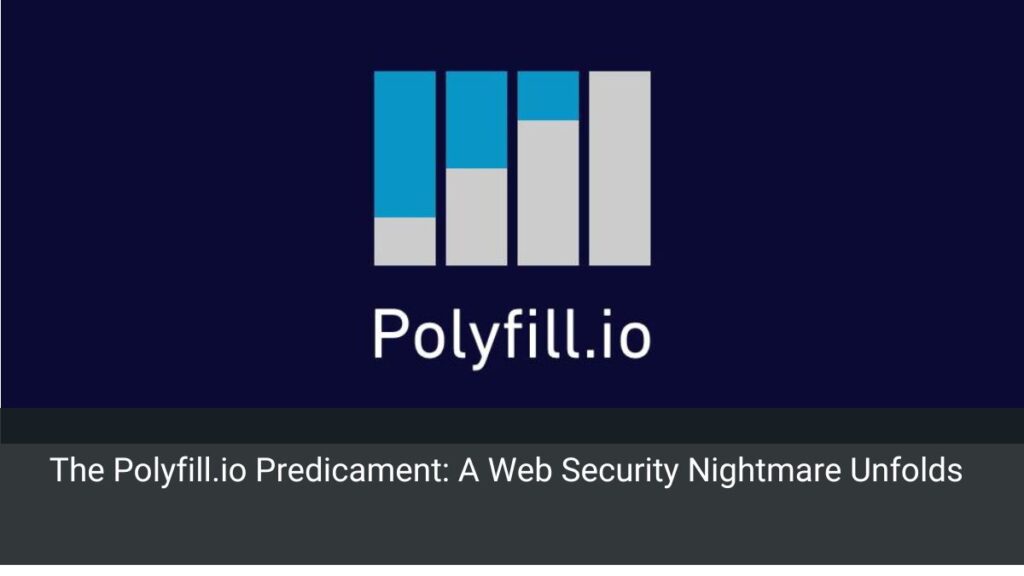In the ever-evolving landscape of web development, tools that promise to simplify our lives often become indispensable. But what happens when these tools turn against us? The recent Polyfill.io saga serves as a stark reminder of the vulnerabilities lurking in our digital ecosystem.
The Rise and Fall of a Developer’s Darling
A Solution for Cross-Browser Compatibility
Once upon a time, Polyfill.io was the golden child of web development. It offered a simple yet elegant solution to a perennial problem: how to ensure your website functions seamlessly across a multitude of browsers, each with its quirks and capabilities. By providing snippets of code that filled in the gaps where older browsers lacked modern features, Polyfill.io became a go-to resource for developers worldwide.
The Changing of the Guard
However, the winds of change blew through the digital realm in February 2023. The domain polyfill.io, along with its associated GitHub repository, changed hands. The new owner? A mysterious CDN operator called Funnull, purportedly based in Slovenia but with strong ties to China. This transfer of power raised eyebrows in the tech community, but few could have predicted the chaos that would ensue.
The Unraveling of Trust
From Helper to Hijacker
Fast forward to the present, and the situation has taken a sinister turn. Security firms have sounded the alarm: Polyfill.io is no longer the benevolent tool it once was. Instead, it’s become a vehicle for distributing malware, potentially infecting over 100,000 websites that still use its services.
Carlo D’Agnolo from security monitoring firm c/side didn’t mince words: “The cdn.polyfill.io domain is currently being used in a web supply chain attack. It used to host a service for adding JavaScript polyfills to websites, but is now inserting malicious code in scripts served to end-users.”
A Web of Deception
The plot thickens when we look closer at Funnull, the new proprietor of Polyfill.io. Despite claims of a global presence, their listed addresses are nonsensical. The website’s underlying language is Mandarin, contradicting their stated Slovenian origin. Some experts even suggest the company might be operating out of the Philippines. This web of inconsistencies only adds to the air of suspicion surrounding the organization.
The Ripple Effects
Big Names, Big Problems
The impact of this security breach is far-reaching. Polyfill.io’s client list reads like a who’s who of the internet: JSTOR, Intuit, and the World Economic Forum, to name a few. These organizations, along with countless others, now find themselves unwitting participants in a massive supply chain attack.
Google Takes Action
In response to the threat, Google has taken the unprecedented step of blocking Google Ads for websites using the compromised code. A Google spokesperson explained, “We detected a security issue recently that may affect websites using certain third-party libraries. To help potentially impacted advertisers secure their websites, we have been proactively sharing information on how to quickly mitigate the issue.”
The Creator’s Warning
A Prescient Caution
Interestingly, Andrew Betts, the original creator of the Polyfill.io service, had issued a warning earlier this year. Following the domain’s sale, he urged website owners to remove Polyfill.io code from their sites. His words now seem prophetic: “If you own a website, loading a script implies an incredible relationship of trust with that third party. Do you actually trust them?”
The Road to Recovery
Immediate Action Required
For website owners and developers, the message is clear: remove any code sourced from Polyfill.io immediately. The risk of serving malware to your users far outweighs any potential benefits the service might offer.
Alternative Solutions
In the wake of this crisis, other CDN providers like Fastly and Cloudflare have stepped up, creating mirrors of Polyfill.io. These alternatives allow websites to continue using the polyfill functionality without the associated security risks.
Lessons for the Future
The Fragility of the Software Supply Chain
This incident serves as a sobering reminder of the vulnerabilities inherent in our interconnected digital world. As we rely more heavily on third-party services and open-source tools, we must remain vigilant about the security implications of these dependencies.
Trust, but Verify
Moving forward, developers and website owners must adopt a more cautious approach to integrating external resources. Regular audits of third-party code, careful vetting of service providers, and a willingness to quickly pivot when security concerns arise are all essential practices in today’s digital landscape.
A Call to Action
As we navigate the aftermath of the Polyfill.io debacle, let this serve as a wake-up call to the entire web development community. We must balance the convenience of third-party tools with robust security practices. Only by fostering a culture of vigilance and responsibility can we hope to build a safer, more resilient web for all.
Remember, in the world of web development, trust is earned, not given. As we move forward, let’s carry this lesson with us, always questioning, always verifying, and always striving to create a more secure digital future.

